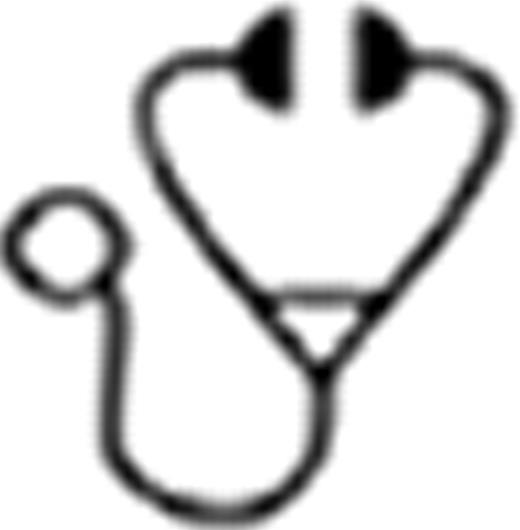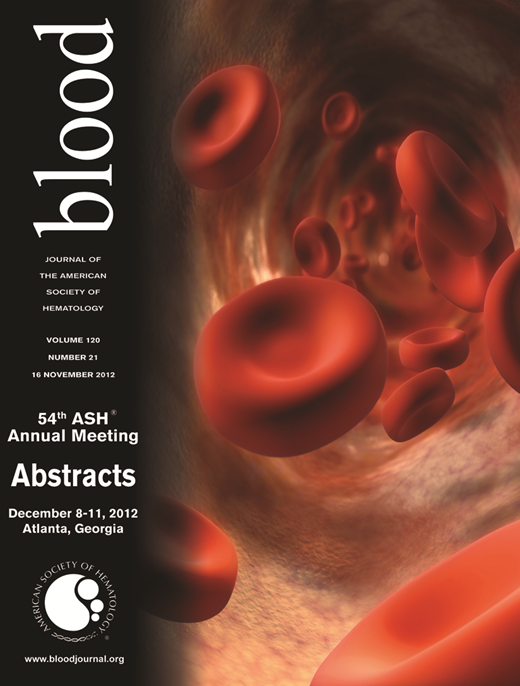Abstract
Ruxolitinib (RUX) has demonstrated clinical benefit for patients with myelofibrosis (MF) with or without the JAK2V617F mutation at starting doses of 15 or 20 mg PO BID by alleviating symptoms, improving quality of life measures, reducing spleen volume and exhibiting an apparent increase in overall survival in the phase III placebo (PBO)-controlled COMFORT-I study. Reversible declines in platelet count and hemoglobin (Hgb) can occur with ruxolitinib but are rarely treatment-limiting. Patients with MF who have low platelet counts represent an important subset of MF patients; given the potential risk of bleeding complications, a dosing strategy for such patients is needed. We assessed an alternative strategy using lower starting doses of ruxolitinib with subsequent dose escalation in patients with MF who have platelet counts of 50–100 × 109/L (Study INCB018424-258; NCT01348490).
RUX dosing started at 5 mg BID. With adequate platelet count, doses could increase by 5 mg once daily every 4 weeks to 10 mg BID. Further increases required evidence of suboptimal efficacy. Assessments include measurement of MF symptoms (MF Symptom Assessment Form v2.0 Total Symptom Score [TSS]); Patient Global Impression of Change (PGIC); EORTC QLQ-C30, measurement of spleen volume by MRI, and safety/tolerability.
A total of 50 patients have enrolled, with data available for 41 patients. Nineteen have completed 24 weeks of treatment; >70% of these patients attained a final dose of ≥10 mg BID of RUX. Treatment was generally well tolerated in this study population with no withdrawals for thrombocytopenia or bleeding events. Based on analysis of adverse events, no new safety signals were observed in this population of MF patients with low platelet counts. Data for efficacy parameters, including spleen volume reduction, TSS reduction, and improvement in EORTC-QLQ-C30 subscales and PGIC were consistent with RUX treatment in the COMFORT-I study, and demonstrated clinically meaningful efficacy compared with the COMFORT-I PBO arm (Table).
| . | RUX Study 258 N=41 . | RUX COMFORT-I N=155 . | PBO COMFORT-I N=154 . |
|---|---|---|---|
| Mean Baseline platelet count, x109/L | 73 | 321 | 280 |
| Mean Baseline Hgb in patients with no transfusions, g/L | 108 | 123 | 115 |
| . | RUX Study 258 N=41 . | RUX COMFORT-I N=155 . | PBO COMFORT-I N=154 . |
|---|---|---|---|
| Mean Baseline platelet count, x109/L | 73 | 321 | 280 |
| Mean Baseline Hgb in patients with no transfusions, g/L | 108 | 123 | 115 |
| . | Week 12/Week 24 . | Week 12/Week 24 . | Week 12/Week 24 . |
|---|---|---|---|
| Mean total daily dose, mg | 15.1/19.1 | 30.4/29.6 | 0 |
| Mean change from Baseline platelet count, x109/L | −1.0/−5.3 | −130/−159 | −9.1/−11.2 |
| Mean change from Baseline Hgb, g/L | −1.8/−0.2 | −18/−11 | +1.3/+1.9 |
| . | Week 12/Week 24 . | Week 12/Week 24 . | Week 12/Week 24 . |
|---|---|---|---|
| Mean total daily dose, mg | 15.1/19.1 | 30.4/29.6 | 0 |
| Mean change from Baseline platelet count, x109/L | −1.0/−5.3 | −130/−159 | −9.1/−11.2 |
| Mean change from Baseline Hgb, g/L | −1.8/−0.2 | −18/−11 | +1.3/+1.9 |
| . | Week 24 . | Week 24 . | Week 24 . |
|---|---|---|---|
| ≥50% reduction in TSS, % of patients | 36 | 46 | 5.3 |
| ≥35% reduction in spleen volume, % of patients | 33 | 42 | 0.7 |
| “Much” or “Very much improved” on PGIC, % of patients | 59 | 67 | 11 |
| Mean change from Baseline on EORTC QLQ-C30 Fatigue Subscale* | –23.4 | –14.8 | 1.8 |
| Mean change from Baseline on EORTC QLQ-C30 Global Health/Quality of Life† | 16.2 | 12.3 | –3.4 |
| . | Week 24 . | Week 24 . | Week 24 . |
|---|---|---|---|
| ≥50% reduction in TSS, % of patients | 36 | 46 | 5.3 |
| ≥35% reduction in spleen volume, % of patients | 33 | 42 | 0.7 |
| “Much” or “Very much improved” on PGIC, % of patients | 59 | 67 | 11 |
| Mean change from Baseline on EORTC QLQ-C30 Fatigue Subscale* | –23.4 | –14.8 | 1.8 |
| Mean change from Baseline on EORTC QLQ-C30 Global Health/Quality of Life† | 16.2 | 12.3 | –3.4 |
Negative changes indicate improvement.
Positive changes indicate improvement.
Of 19 patients with platelet count data through Week 24, 5 showed increased platelet count over the duration of the study (range of increase: 20 to 95 x109/L); all 5 patients had optimized dosing to ≥10 mg BID. Compared with the 14 patients showing smaller increases or modest decreases in platelet count, these 5 patients were younger (mean age: 63 years vs. 71 years), had been diagnosed with MF more recently (2.2 years vs. 5.2 years) and had lower DIPSS scores (60% Intermediate-1; 20% Intermediate-2; 20% High vs. 0% Intermediate-1; 79% Intermediate-2; 21% High).
Four patients (9.8%) reported adverse events of bleeding (excluding events related to bruising) of any grade (all events were Grade 1 except one Grade 2 hematochezia), consistent with previously reported hemorrhage frequency in the COMFORT-I study (16.8%, RUX; 12.6%, PBO).
These preliminary findings suggest that a dosing strategy of a low starting dose of RUX with escalation to 10 mg BID may be appropriate in MF patients who have low platelet counts. Most patients were able to titrate to a dose of ≥10 mg BID of RUX, a dose showing efficacy for both spleen volume and patient-reported outcomes generally consistent with previously reported data from Phase III trials. An increase in platelet counts was observed in approximately one-fourth of patients who completed 24 weeks of RUX treatment. Escalation to, and subsequent maintenance of, a 10 mg BID dose of RUX also preserves both Hgb and platelet count which may be beneficial for MF patients with anemia or thrombocytopenia.
Talpaz:Novartis: Membership on an entity's Board of Directors or advisory committees, Research Funding, Speakers Bureau; BMS: Membership on an entity's Board of Directors or advisory committees, Research Funding; Ariad: Research Funding; Sanofi: Membership on an entity's Board of Directors or advisory committees, Research Funding; Teva: Membership on an entity's Board of Directors or advisory committees; Pfizer: Membership on an entity's Board of Directors or advisory committees. Paquette:Incyte: Consultancy. Jamieson:Sunesis: Membership on an entity's Board of Directors or advisory committees; Blue Distinction Centers for Transplants BlueCross BlueShield Association: Consultancy. Lyons:Amgen: Consultancy, Research Funding; Incyte: Consultancy, Research Funding; Novartis: Research Funding. Tiu:Incyte: Honoraria, Speakers Bureau. Winton:Incyte Corporation: Consultancy, Honoraria. Odenike:Incyte: Membership on an entity's Board of Directors or advisory committees; Sanofi-Aventis:Membership on an entity's Board of Directors or advisory committees. Peng:Incyte: Employment, Equity Ownership. Sandor:Incyte: Employment, Equity Ownership. O'Neill:Incyte: Employment, Equity Ownership. Erickson-Viitanen:Incyte: Employment, Equity Ownership. Leopold:Incyte: Employment, Equity Ownership. Levy:Incyte: Employment, Equity Ownership. Kantarjian:Incyte Corporation: grant support Other. Verstovsek:Incyte Corporation: Research Funding.

This icon denotes a clinically relevant abstract
Author notes
Asterisk with author names denotes non-ASH members.


